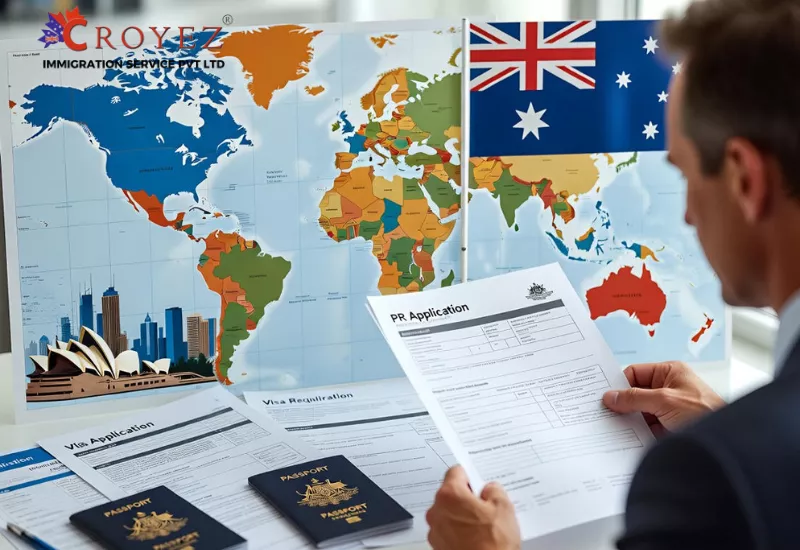Immigration to Canada is popularly considered one of the best moves you can make in your life. Canada is a highly developed country that provides you with much better options for personal development and career growth. Indeed, Canada is a country loaded with opportunities for those in search of better career opportunities and financial growth.
How do you move to Canada?
There are different ways, channels, and streams through which you can move/immigrate to Canada. Read on to know more!
Open Work Permits
An open work permit authorizes a person to move to Canada without having an active Job Offer in hand. Because this visa is not dependent on a Job Offer, it is not required to fulfill mandatory requirements with other Work Permits. For instance, you don't need a Labour Market Impact Assessment (LMIA) or evidence of Offer of Employment from an Employer who has paid a Compliance Fee. There are many ways to get an Open Work Visa for migrating to Canada. Some of the ways you can qualify are –
- Permanent Residents who have applied for a job in Canada.
- Dependent family members of Permanent Residents.
- Certain refugees/refugee claimants whose cases have not been addressed yet.
- Spouses / Common-law partners of Permanent Residents.
- Some types of Temporary Residents.
- Young workers who are participants in some specific programs like ‘Working Holidays’.
Types of Open Work Permits
There are broadly two types of Open Work Permits for working in Canada. They are – 1) Restricted Open Work Permit It is usually a restricted Work Permit based upon either the occupation or the location. 2) Unrestricted Open Work Permit Unrestricted Open Work Permit allows any foreign national to work in any occupation in any location inside Canada.
Also Read: Here Are Some Tips To Get Settled In Canada
The difference between Open and Closed Work Permits
An Open Work Visa allows an individual to move to Canada and work for any Employer, irrespective of location. On the other hand, a Closed Work Permit is usually restricted to a specific employer only.
Process for applying for Open Work Permit in Canada
There are certain conditions to be met before applying for an Open Work Visa in Canada. They are – ? Providing evidence of financial resources to sustain you and your family during your stay / till your work permit validity. ? Evidence of zero criminal records. ? Evidence of good health. ? Evidence of meeting all Work Permit Eligibility conditions like language skills, biometric data, and insurance. ? Willingness to adhere to all the conditions of your work permit even if it is a Restricted Work Permit.
International Mobility Program (IMP)
Getting a Work Permit under the IMP program is easier and faster. You don't need an LMIA. Also, these permits are often processed within two weeks. Permits under IMP can be Open Work Permits or Restricted Work Permits. There are various streams for applying for Work Permits under the IMP. They are – ? International Experience Canada (IEC) – This program is designed for young adults from 37 participating countries to work and travel in Canada. ? Canada – United States – Mexico Agreement – Traders, Investors, and other working professionals from the United States and Mexico can get employer-specific Work Permits under the CUSMA Agreement. ? Post-graduate Work Permit – International students who have graduated from a Designated Learning Institution (DLI), and want to continue staying on for work are considered for this permit. The only condition here is that the study program should be more than eight months. They should also have a valid study permit while applying for a Work Permit. ? Temporary Foreign Workers Program – Work Permits under TFWP are strictly restricted. You need a Job Offer supported by LMIA to get a Work Permit under the TFWP stream. Applying under TFWP is a long process as it focuses more on the labor market needs of Canadian Employers. This stream includes the following category of workers –
a) High Wage Worker Stream
b) Low Wage Worker Stream
c) Seasonal or Non-seasonal Worker Stream
d) Global Talent Stream
Evidence to be submitted for working in Canada
Regardless of the scheme/stream you apply for, there are certain basic criteria that you need to match before applying for a Work Permit in Canada.
- You should prove to an officer that you will mandatorily leave Canada once your Work Permit expires.
- Provide concrete evidence that you have sufficient finances to take care of your own needs and your family’s needs during your stay in Canada.
- Obey all local and national laws and provide evidence that you’ve got no criminal record anywhere.
- You don't have any plan of working for any employer listed as "ineligible" on the list of employers failing to meet/comply with the conditions.
- Provide the officers with any other document they ask for to prove that you can enter Canada legally.
List of documents required for Work Permit
For programs that require Labour Market Impact Assessment, you need to submit the following documents – 1) A copy of the LMIA provided by ESDC (Employment and Social Development Canada) to your prospective employer. 2) An Offer of Employment from your prospective employer. For programs not requiring LMIA, you’ll need the following documents – 1) Offer of Employment to a Foreign National exempt from LMIA (IMM5802 document) or the Offer of Employment ID Number. 2) Contract of Employment copy.
Conclusion
Even though the process of applying for an Open Work Permit for Canada can be time-consuming, the benefits of obtaining one far outweigh the disadvantages. The general advantages/benefits of living in Canada are –
- Canada is not overpopulated.
- It has outstanding Healthcare benefits.
- It is commonly considered amongst the happiest countries on earth.
- It has abundant natural resources.
- The education infrastructure in Canada is world-class.
As suggested at the beginning of this article, moving to this beautiful nation is a good choice for you and your family. It guarantees a bright future, both professionally and financially.





